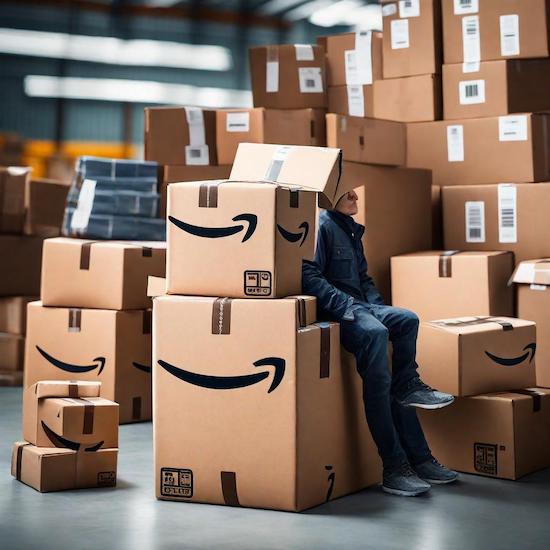Dropshipping on Amazon has been a popular business model, offering entrepreneurs a low-risk entry into the world of online retail.
Unlike traditional retail models, where businesses are burdened with inventory management and upfront costs, dropshipping allows sellers to list products for sale without holding any physical stock. Instead, the products are sourced directly from suppliers or manufacturers who handle the fulfillment process.
The allure of dropshipping on Amazon lies in its potential benefits for both novice and experienced entrepreneurs. By eliminating the need for warehousing and inventory management, sellers can focus on marketing, customer service, and scaling their business. This model offers a cost-effective way to test and validate product ideas, allowing for greater flexibility and adaptability in the ever-evolving market.
The growing trend of dropshipping as a business model is evident in the increasing number of individuals and businesses adopting this approach. Entrepreneurs are drawn to the ease of entry, minimal upfront investment, and the ability to tap into a global marketplace through the Amazon platform. As technology advances and consumer behavior evolves, dropshipping has become a viable and attractive option for those looking to start an online business.
Why Choose Amazon for Dropshipping?
When embarking on a dropshipping venture, selecting the right platform is crucial for success, and Amazon stands out as an exemplary choice for a myriad of compelling reasons.
- Vast Customer Base:
- Global Marketplace: Amazon boasts an immense global customer base, providing dropshippers with unparalleled access to millions of potential buyers. The platform’s widespread popularity ensures a constant flow of traffic, presenting ample opportunities for product exposure and sales.
- Trust and Credibility: Amazon’s reputation as a trusted online marketplace instills confidence in consumers. This inherent trust can translate into increased sales for dropshippers, as customers feel secure making purchases on a platform known for reliability and buyer protection.
- Established Infrastructure:
- Fulfillment by Amazon (FBA): Amazon’s Fulfillment by Amazon (FBA) service is a game-changer for dropshippers. FBA allows sellers to store their inventory in Amazon’s fulfillment centers, and when a product is sold, Amazon handles packing, shipping, and customer service. This streamlined process significantly reduces the logistical burden on dropshippers.
- Efficient Shipping and Handling: Amazon’s robust logistics network ensures fast and reliable shipping. This not only contributes to customer satisfaction but also enhances the overall buying experience, potentially leading to repeat business and positive reviews.
- Brand Visibility:
- Exposure on a Premier E-commerce Platform: By leveraging Amazon’s vast marketplace, dropshippers benefit from increased visibility for their products. The platform’s sophisticated algorithms recommend products to users based on their preferences and buying history, providing an additional avenue for exposure and sales.
- Customer Trust and Reviews:
- Customer Reviews: Amazon’s review system is a powerful tool for building trust. Positive reviews can significantly impact purchasing decisions, and sellers can harness this feature to establish credibility and attract more customers.
Get Started with Dropshipping on Amazon
Research and Niche Selection
Embarking on a successful dropshipping journey begins with meticulous research and strategic niche selection. Understanding the market and identifying a profitable niche are pivotal steps that can significantly impact your success.
Importance of Market Research and Niche Selection
- Identifying Demand: Thorough market research helps you identify products with high demand. Analyze trends, customer preferences, and competitor offerings to discover potentially lucrative niches.
- Competition Analysis: Assessing competition is crucial. Choose niches with a balance—avoid oversaturated markets while ensuring there is enough demand to sustain your business.
- Profitability Assessment: Research potential profit margins. Consider the cost of goods, shipping, and Amazon fees to determine if a niche is financially viable.
Tips on Finding Profitable Niches and Products
- Use Amazon Tools: Leverage Amazon’s tools like the Best Sellers list, Movers & Shakers, and the Hot New Releases section to identify trending products and categories.
- Google Trends: Explore Google Trends to gauge the popularity of products over time. Look for consistent or upward trends.
- Niche-Specific Forums: Engage with niche-specific forums to understand customer pain points, preferences, and emerging trends.
- Supplier Research: Ensure reliable suppliers exist for your chosen niche. Research supplier’s reputations, shipping times, and product quality.
Setting Up Your Amazon Seller Account
Now that you’ve identified your niche, it’s time to create a seller account on Amazon. A well-optimized account lays the foundation for a successful dropshipping venture.
Guide to Creating Your Amazon Seller Account
- Choose Your Seller Plan: Select between an Individual or Professional seller account based on your business needs. A Professional account is recommended for those planning to sell in volume.
- Register Your Account: Provide necessary information, including business details, tax information, and bank account details for payments.
- Create Product Listings: List your products with compelling titles, detailed descriptions, and high-quality images. Highlight key selling points to attract potential buyers.
- Optimize for Search: Use relevant keywords in your product listings to enhance visibility. Understand and implement Amazon SEO best practices to improve search rankings.
Managing Orders and Customer Service
Order Fulfillment Process
Efficient order fulfillment is at the heart of successful dropshipping. Understanding the logistics and utilizing tools and services to streamline the process is essential for providing a seamless customer experience.
Logistics of Order Fulfillment in Dropshipping
- Customer Order Placement: When a customer places an order on your Amazon store, the details are transmitted to your chosen supplier or manufacturer.
- Supplier Processing: The supplier processes the order, packs the product, and ships it directly to the customer’s address.
- Shipment Tracking: Utilize tools to track shipments in real-time. This information allows you to keep customers informed about the status of their orders.
- Customer Communication: Keep customers updated on their order status, including shipping confirmation and expected delivery dates.
Tools and Services to Streamline the Process
- Order Management Software: Platforms like Oberlo, Dropified, or DSM Tool automate order processing and tracking, streamlining the entire fulfillment process.
- Inventory Management Tools: Use tools like Skubana or Sellbrite to manage your inventory levels, preventing overselling and ensuring accurate product listings.
- Shipment Tracking Apps: Integrate shipment tracking apps like Aftership to provide customers with real-time updates on their orders.
Providing Excellent Customer Service
Responsive and reliable customer service is a cornerstone of a successful dropshipping business. Proactive communication and effective handling of inquiries and returns contribute to customer satisfaction and loyalty.
Importance of Responsive and Reliable Customer Service
- Building Trust: Timely and informative responses to customer inquiries build trust and credibility. Customers are more likely to return if they have a positive interaction with your customer service team.
- Positive Reviews: Excellent customer service contributes to positive reviews, influencing potential buyers and enhancing your seller reputation on Amazon.
- Issue Resolution: Swiftly address and resolve customer issues. This can include providing solutions for shipping delays, product defects, or other concerns.
Tips for Handling Returns and Inquiries
- Clear Return Policy: Clearly communicate your return policy on your Amazon store. Transparent policies instill confidence in customers.
- Automate Customer Inquiries: Use chatbots or automated responses to handle common customer inquiries, providing instant answers and freeing up time for more complex issues.
- Proactive Communication: Keep customers informed about any delays or issues with their orders. Proactive communication can prevent dissatisfaction and build understanding.
Frequently Asked Questions
Look for suppliers with positive reviews, communicate directly to assess their processes, and consider placing sample orders.
Competitive pricing is essential to attract buyers. Regularly monitor competitor pricing, consider total costs when setting prices, and find a balance between profitability and competitiveness.
Yes, you can dropship internationally on Amazon. However, be aware of shipping times, and potential customs issues, and ensure compliance with Amazon’s policies for international sales.
Be responsive to customer inquiries, communicate proactively about order status, and resolve issues promptly. Utilize automated responses for common inquiries and ensure your return policy is clear.

With years of expertise in the world of dropshipping, I am a seasoned professional dedicated to sharing insights and strategies for entrepreneurial success.








Leave a Reply